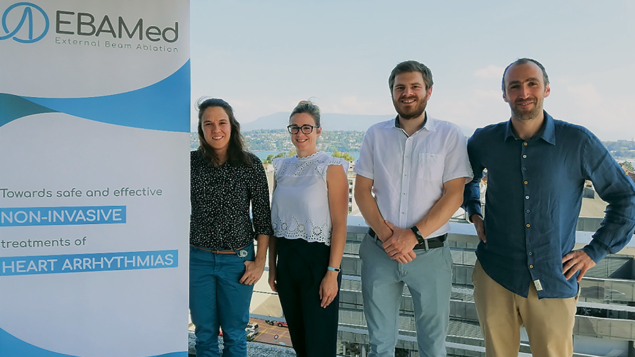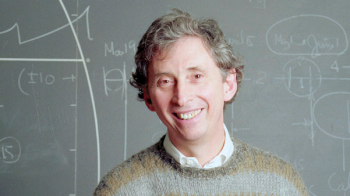Accelerator engineer Adriano Garonna is CEO and co-founder of EBAMed, which is developing technologies to enable non-invasive treatments of heart arrhythmia using proton beams.

In December last year, a beam of protons was used to treat a patient with cardiac arrhythmia – an irregular beating of the heart that affects around 15 million people in Europe and North America alone. The successful procedure, performed at the National Center of Oncological Hadrontherapy (CNAO) in Italy, signalled a new application of proton therapy, which has been used to treat upwards of 170,000 cancer patients worldwide since the early 1990s.
In parallel to CNAO – which is based on accelerator technologies developed in conjunction with CERN via the TERA Foundation – a Geneva-based start-up called EBAMed (External Beam Ablation) founded by CERN alumnus Adriano Garonna aims to develop and commercialise image-guidance solutions for non-invasive treatments of heart arrhythmias. EBAMed’s technology is centred on an ultrasound imaging system that monitors a patient’s heart activity, interprets the motion in real time and sends a signal to the proton-therapy machine when the radiation should be sent. Once targeted, the proton beam ablates specific heart tissues to stop the local conduction of disrupted electrical signals.
Fast learner
“Our challenge was to find a solution using the precision of proton therapy on a fast and irregular moving target: the heart,” explains Garonna. “The device senses motion at a very fast rate, and we use machine learning to interpret the images in real time, which allows robust decision-making.” Unlike current treatments, which can be lengthy and costly, he adds, people can be treated as outpatients; the intervention is non-invasive and “completely pain-free”.
The recipient of several awards – including TOP 100 Swiss Startups 2019, Venture Business Plan 2018, MassChallenge 2018, Venture Kick 2018 and IMD 2017 Start-up Competition – EBAMed recently received a €2.4 million grant from the European Union to fund product development and the first human tests.
Garonna’s professional journey began when he was a summer student at CERN in 2007, working on user-interface software for a new optical position-monitoring system at LHC Point 5 (CMS). Following his graduation, Garonna returned to CERN as a PhD student with the TERA Foundation and École Polytechnique Fédérale de Lausanne, and then as a fellow working for the Marie Curie programme PARTNER, a training network for European radiotherapy. This led to a position as head of therapy accelerator commissioning at MedAustron in Austria – a facility for proton and ion therapy based, like CNAO, on TERA Foundation/CERN technology. After helping deliver the first patient treatments at MedAustron, Garonna returned to CERN and entered informal discussions with TERA founder Ugo Amaldi, who was one of Garonna’s PhD supervisors, about how to take the technology further. Along with former CERN engineer Giovanni Leo and arrhythmia expert Douglas Packer, the group founded EBAMed in 2018.
“Becoming an entrepreneur was not my initial purpose, but I was fascinated by the project and convinced that a start-up was the best vehicle to bring it to market,” says Garonna. Not having a business background, he benefitted from the CERN Knowledge Transfer entrepreneurship seminars as well as the support from the Geneva incubator Fongit and courses organised by Innosuisse, the Swiss innovation agency. Garonna also drew on previous experience gained while at CERN. “At CERN most of my projects involved exploring new areas. While I benefitted from the support of my supervisors, I had to drive projects on my own, seek the right solutions and build the appropriate ecosystem to obtain results. This certainly developed an initiative-driven, entrepreneurial streak in me.”
Healthy competition
Proton therapy is booming, with almost 100 facilities operating worldwide and more than 35 under construction. EBAMed’s equipment can be installed in any proton-therapy centre irrespective of its technology, says Garonna. “We already have prospective patients contacting us as they have heard of our device and wish to benefit from the treatment. As a company, we want to be the leaders in our field. We do have a US competitor, who has developed a planning system using conventional radiotherapy, and we are grateful that there is another player on the market as it helps pave the way to non-invasive treatments. Additionally, it is dangerous to be alone, as that could imply that there is no market in the first place.”
Leaving the security of a job to risk it all with a start-up is a gradual process, says Garonna. “It’s definitely challenging to jump into what seems like cold water… you have to think if it is worth the journey. If you believe in what you are doing, I think it will be worth it.”








